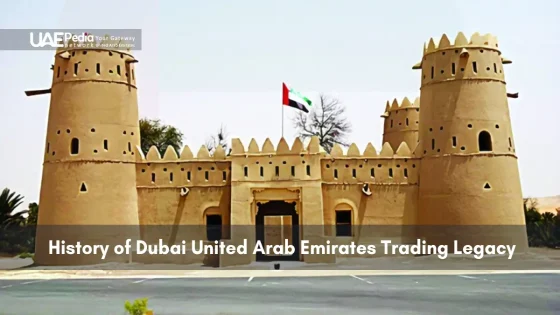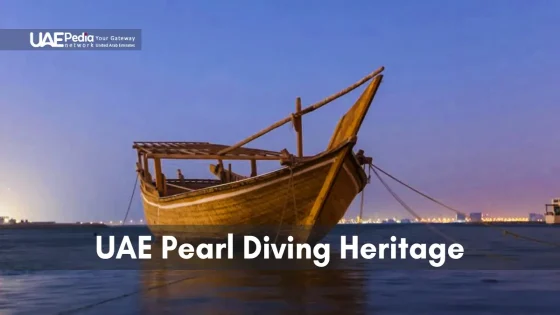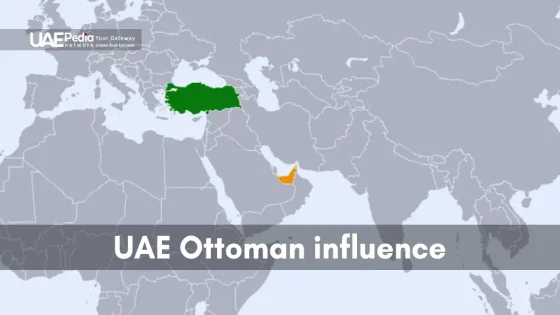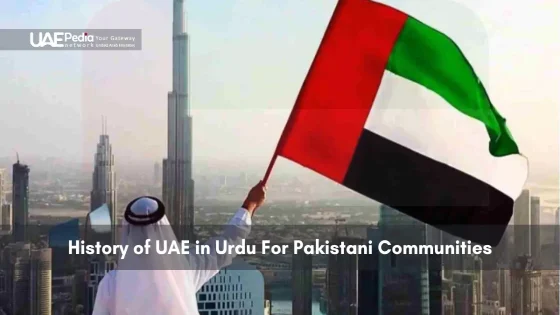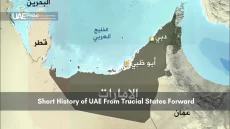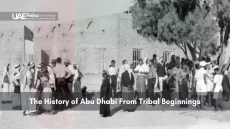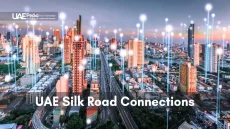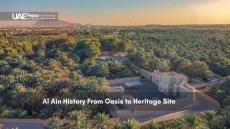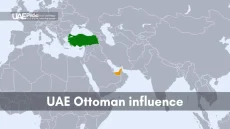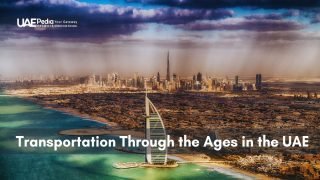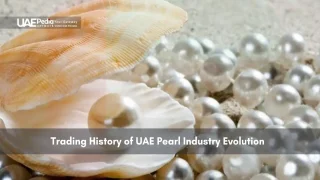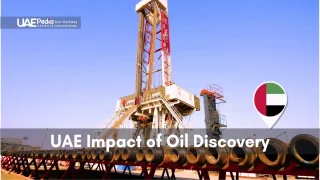What if we told you this glittering skyscraper kingdom began as a modest fishing settlement where merchants bartered pearls under palm-frond shelters? Long before luxury malls and futuristic architecture, the story of this Middle Eastern hub unfolded along sandy shores and bustling creek ports.
Early settlers thrived through maritime trade, leveraging its position between Asia and Europe. Clever negotiations with British protectors in the 19th century cemented its role as a cultural crossroads. By the 1970s, visionary leadership transformed these foundations into a federation celebrated worldwide.
Traders navigating wooden dhows established economic blueprints still visible today. Partnerships with neighboring territories like Abu Dhabi created stability, while strategic investments in infrastructure turned tidal inlets into thriving ports. This wasn’t just survival—it was the birth of a global connector.
- Coastal beginnings: How saltwater economies shaped early ambitions
- Bridge between worlds: The creek that became an international artery
- Blueprint for unity: Collaborative foundations preceding modern alliances
Historic Foundations and Early Trade Routes
Picture this: salty breezes carrying the hum of haggling merchants as wooden boats bobbed in a sun-drenched waterway. Long before oil reshaped the landscape, the rhythm of life here pulsed along a natural harbor where pearls meant power.
Pre-Oil Era and the Trucial States
In the 1800s, coastal settlements thrived under a unique pact called the Trucial States. British ships patrolled the Gulf, offering protection in exchange for trade access. Local leaders mastered diplomacy—keeping autonomy while forging ties that opened routes to Bombay and beyond.
Markets buzzed with:
- Pearls sorted by moonlight
- Dried fish bound for distant ports
- Spices from Zanzibar’s shores
The Creek and the Flourishing Pearl Trade
Deira’s creek-side souq became the region’s Wall Street. At dawn, divers plunged with nose clips made of turtle shell. By noon, traders weighed gems that would grace Parisian necklaces. “A good season’s haul could feed a family for years,” elders recall.
This watery highway didn’t just move goods—it connected cultures. You’d hear Farsi, Swahili, and Balochi between the maritime trade deals. When Japanese cultured pearls arrived in the 1930s, clever merchants pivoted to gold and textiles, proving adaptability ran deep.
Transformation Through Oil Discovery and Infrastructure
Imagine waking up to a skyline where cranes outnumbered palm trees—that was 1970s Dubai. The discovery of oil in 1966 didn’t just fill coffers; it rewired an entire region’s DNA. Suddenly, dusty trading posts buzzed with engineers, and pearl divers’ grandsons became urban planners.
The Impact of the Oil Boom on Economic Growth
Black gold turned sand into steel. Revenues funded jaw-dropping projects: Jebel Ali Port (then the world’s largest man-made harbor), six-lane highways, and air-conditioned shopping arcades. By 1975, GDP grew 18% annually—faster than Wall Street’s wildest dreams.
Development Under Visionary Leadership
Sheikh Rashid bin Saeed Al Maktoum became the architect of modern ambition. “What’s good for the next generation is worth building today,” he declared, greenlighting projects like the Dry Docks and Dubai World Trade Centre. His team reinvested oil wealth into schools, hospitals, and a government focused on long-term stability.
Transition From Re-Export Hub to Modern Metropolis
Dubai’s leaders knew oil wouldn’t last forever. By the 1980s, they’d launched:
- Tax-free zones to attract global businesses
- Tourism campaigns showcasing desert safaris
- Expansion of Emirates Airline into a global connector
| Aspect | Pre-Oil Era | Oil Boom Impact |
|---|---|---|
| Economy | Pearls & textiles | Energy exports & diversified investments |
| Infrastructure | Mud-brick homes | Skyscrapers & superhighways |
| Global Role | Regional trade hub | Worldwide business & tourism magnet |
Abu Dhabi’s partnership proved crucial, pooling resources to form the arab emirates federation. Together, they turned a single resource into endless possibilities—from solar farms to Mars missions. Oil wasn’t the finish line; it was the starting pistol.
Exploring the history of dubai united arab emirates
The story of the UAE’s birth is a masterclass in diplomacy and vision. When British forces withdrew from the Gulf in 1971, seven emirates faced a choice: stand divided or unite for strength. Leaders like Sheikh Zayed of Abu Dhabi and Sheikh Rashid of Dubai championed collaboration, blending Bedouin traditions with modern statecraft.
Formation of the United Arab Emirates and Political Shifts
December 2, 1971, changed everything. Six emirates signed the union agreement (Ras Al Khaimah joined later), creating a federation that balanced local autonomy with shared goals. The government structure became innovative—each emirate kept control over resources while pooling defense and foreign policy.
Key moves included:
- Designating Abu Dhabi as the capital for its oil wealth and strategic weight
- Establishing a Supreme Council of Rulers to guide national decisions
- Launching federal institutions to unify education and healthcare
Global Diplomacy and Trade Relationships
Freshly minted diplomats hit the ground running. By 1974, the UAE secured recognition from 85 nations and signed a critical oil export deal with Japan. “We built bridges, not walls,” remarked one founding negotiator. The 1980s saw tax-free zones lure multinational companies, while Emirates Airline connected the federation to 150 cities.
| Era | Focus | Milestone |
|---|---|---|
| 1970s | State Building | OPEC membership & currency unification |
| 1990s | Global Integration | WTO entry & Dubai Internet City launch |
| 2020s | Future Readiness | Abraham Accords & Expo 2020 partnerships |
Oil revenues funded smart bets—from renewable energy projects to space programs. Today, over 200 nationalities call the UAE home, proof that historical handshakes still shape tomorrow’s opportunities.
Fostering a Legacy of Culture, Innovation, and Global Trade
From pearl divers to AI pioneers, this desert marvel never stops reinventing itself. Towering over the sands, the Burj Khalifa isn’t just a skyscraper—it’s a steel-and-glass manifesto declaring “why settle?” Nearby, Palm Islands reshape coastlines while museums preserve ancient dhow-building techniques.
Oil wealth sparked initial growth decades ago, but today’s skyline reflects smarter bets. Solar farms stretch beside robot-run hotels, and the Museum of the Future whispers tomorrow’s breakthroughs. Walk through Al Fahidi’s wind-tower houses one moment, then watch drones deliver lunch to your rooftop table the next.
The arab emirates thrive through this blend—honoring Bedouin hospitality while launching Mars missions. Global talent flocks here, drawn by tax-free zones and the spirit of the united arab that turns dunes into destinations. Every sunrise brings fresh projects: hyperloops, 3D-printed neighborhoods, coral reef restoration.
Want to see where tradition meets tomorrow? Your day starts now. Grab karak chai from a street vendor, then ride the elevator to Cloud 122—the world’s highest observation deck. This federation’s rich history of trade now fuels AI labs and film studios, proving that vision, when paired with action, builds legends.
Long before black gold transformed the skyline, Dubai thrived as a pearl-diving port and re-export center. Its natural creek harbor became a lifeline for merchants sailing between Asia, Africa, and Europe. Even during tough times, clever tax policies and open markets kept goods—and ambitions—flowing.
The seven emirates, once called the Trucial States under British treaties, forged unity through shared desert resilience and coastal trade. After Britain’s withdrawal in 1971, leaders like Sheikh Zayed and Sheikh Rashid championed federation—creating the UAE as a sovereign bridge between tradition and tomorrow.
While Abu Dhabi struck oil first, Dubai’s smaller reserves pushed its leaders to innovate. Revenue funded ports, airports, and free zones, diversifying beyond crude. Think Jebel Ali Port (1979) and Emirates airline (1985)—smart bets that turned trade roots into global superhighways.
Sheikh Rashid bin Saeed Al Maktoum’s famous quote—“My grandfather rode a camel, my father rode a camel, I drive a Mercedes…”—captures the mindset. Leaders prioritized infrastructure, education, and tourism long before neighbors, blending Bedouin pragmatism with futurist vision. Today, that DNA fuels AI cities and Mars missions.
Walk from the gold souk’s alleyways to the Burj Khalifa’s observation deck in 20 minutes—that’s the magic. Museums like Etihad showcase pearl-diving history, while Al Fahidi’s wind towers whisper old tales. Even mega-projects like Dubai Frame literally bridge past and present, proving growth doesn’t erase identity.
